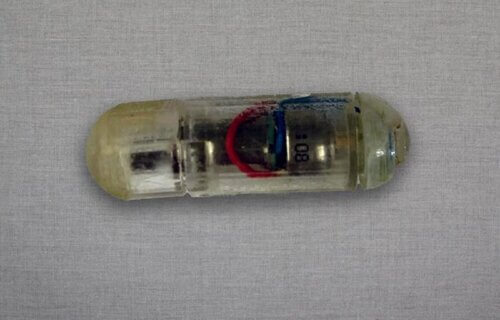CAMBRIDGE, Mass. — A vibrating stomach pill could be an affordable method of combating obesity, according to a new study. This innovative device transmits signals to the brain, inducing a sensation of fullness and reducing the user’s urge to eat.
In trials with animals, administering the pill 20 minutes before feeding led to a notable decrease in food consumption by approximately 40 percent. The pill functions by engaging the body’s natural mechanisms, presenting a potential alternative to invasive surgeries, physical exercise, or dieting for weight management.
“For somebody who wants to lose weight or control their appetite, it could be taken before each meal. This could be really interesting in that it would provide an option that could minimize the side effects that we see with the other pharmacological treatments out there,” says Assistant Professor Shriya Srinivasan from the Massachusetts Institute of Technology (MIT), in a media release. “I wondered if we could activate stretch receptors in the stomach by vibrating them and having them perceive that the entire stomach has been expanded, to create an illusory sense of distension that could modulate hormones and eating patterns.”
The capsule, comparable in size to a multivitamin, operates by stimulating the brain to produce insulin and specific hormones that aid in digestion, foster a feeling of fullness, and curtail eating. Concurrently, the levels of ghrelin, a hormone that promotes hunger, decrease.

Once the pill, powered by a small silver oxide battery, reaches the stomach, its gelatinous outer layer dissolves. This action completes the electronic circuit and activates the vibrating motor.
To evaluate the pill’s effectiveness, the research team administered it to animals, monitoring their hormone levels and appetite. Their findings revealed hormone release patterns in the animals that mirrored those post-meal, even when they had not eaten.
“The behavioral change is profound, and that’s using the endogenous system rather than any exogenous therapeutic. We have the potential to overcome some of the challenges and costs associated with delivery of biologic drugs by modulating the enteric nervous system,” says Associate Professor Giovanni Traverso.
Currently, the pill is designed to vibrate for around 30 minutes after entering the stomach, but there are plans to modify it for longer durations, allowing wireless activation as needed. In animal studies, the pills passed through the digestive system within four to five days.
The researchers envision their invention as a solution to the challenges posed by current obesity treatments. Nonmedical interventions like diet and exercise are not universally effective, and many medical options are invasive and costly.
The MIT team believes their capsules can be produced affordably, making them accessible to those who cannot afford more expensive treatments.
“For a lot of populations, some of the more effective therapies for obesity are very costly. At scale, our device could be manufactured at a pretty cost-effective price point,” adds Prof. Shriya Srinivasan. “I’d love to see how this would transform care and therapy for people in global health settings who may not have access to some of the more sophisticated or expensive options that are available today.”
The team is now focusing on scaling up the production of the capsules to facilitate human clinical trials.
The study is published in the journal Science Advances.
You might also be interested in:
- Remote-controlled medication? Electronic pills could allow patients to digitally release drugs
- Robot pill delivers insulin directly to the gut — replacing injections for diabetes patients
- Can’t stop snacking? Blood sugar may explain why some feel hungry all the time
South West News Service writer Isobel Williams contributed to this report.


Sounds fun! So you retrieve the pill and go again? How many times?
Sounds seriously possible. (I admit yuck factor.) Suppose you take away the gelatin coating; use stable coating, instead, that can be sterilized chemically or otherwise (e.g.,UV light); use a system that can retrieve pills (differential buoyancy, magnetic, electret, whatever), and means to re-charge (RF, magnetic induction, etc.) Or, just skip the pill, and package it (the device) as a snap-on attachment for the stomach. (As if things were that easy.)
Anybody looking into whether an external gut joy buzzer would do this?
Would external vibrations cause the same sensation? That would be easier to utilize at home and you don’t have to pass it through either
HMO patients can expect to receive recycled pills at significantly reduced costs.
So, is it recyclable? Poop it out, rinse and repeat?
😉
Andy
6A 1992
Make it float and it might stay in there a while
Why have this pill? Obesity is celebrated by the woke left.
…Well, maybe the Left will embrace a vibrating suppository? Might not curb obesity, but it could help with loneliness, tee hee.